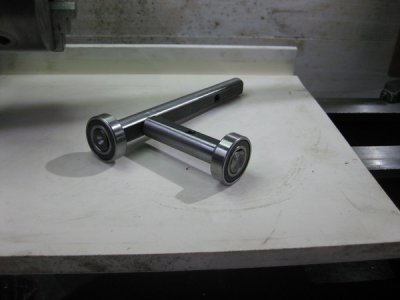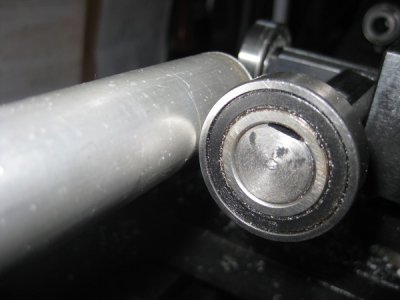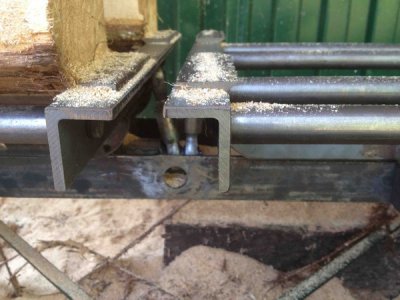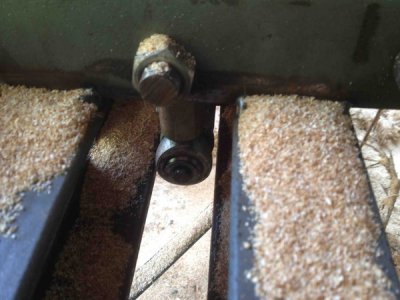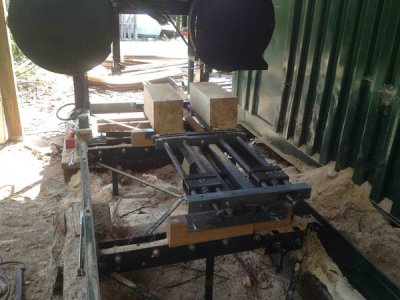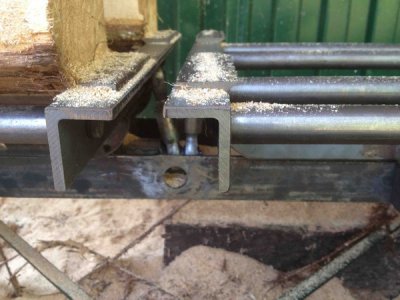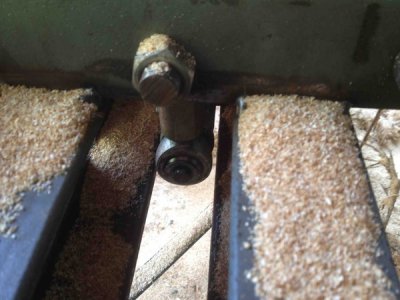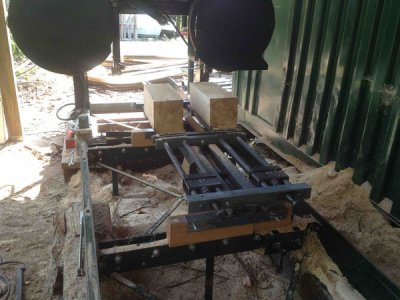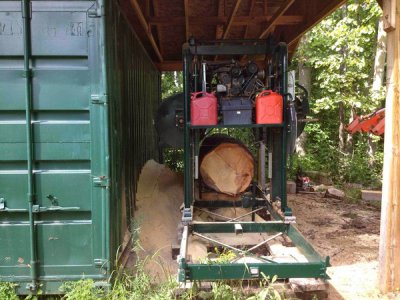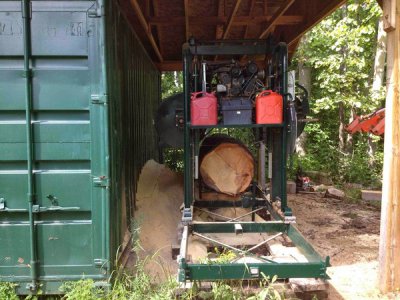I wouldn't bother. Every time you make something you check diameters at each end and make the adjustments as you take the bar down to size. Take small amounts if you don't have much to remove and after a few cuts you should have it close. In other words you have a newly made test bar for every size of shaft you make as you make the part.
Thanks John in days of yore that's what would have happened.
These days with my lathe skills , eyesight and limb control I'd tend to get a traffic cone shape and as soon as I " Adjusted " it.
The major diameter would mysteriously move to the opposite end ........ that's how my 1" test bar stock ended up as a just over 3/4 " parallel bar.

I checked it this morning , when all tools & metals were to same cold temperature and it's reading 0.01 mm difference over three checks ..I'm chuffed to goolies.
I still will be making the test bars but this time in steel not just to have some quick centre to centre references , but to also get a lot of time running circles . It will help me live & breath the lathe to become familiar with tip shapes & cutting speeds etc . so everything becomes second nature & semi automatic in my stroke recovering brain.
Here is my speedy accurate
Setting Up Device ( SUD ) ...... it fits in the QCTP boring bar block ( will actually live there till I have to change things ... one day ?
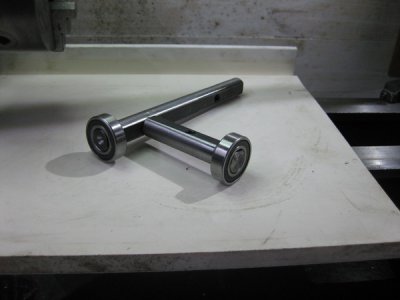
Here it is in action .
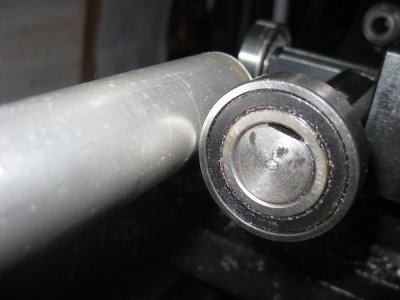
I used a bit of household cling film food wrap to nip up to the bar to roll the
SUD bearing by inserting it between the bar & the precision roller bearing , turning the chuck by hand & gently & slowly advancing he cross feed into the test piece .
Once it had been nipped up and checked all round the bar , then eased the film out as I turned the chuck . I was not able to advance the cross feed anymore on to the bar so that it was noticeable on the 1 thou marks on the hand wheel dial .
It came in very handy this afternoon ..I use the SUD to reset up some studs that had to be taken off my lather to my neighbours to see how well they fitted his wood work lathe . A 3 thou shaving on the second session saw all four of them slide in position like they'd been made to fit by a real good machinist to a technical drawing spec.
